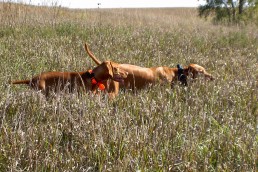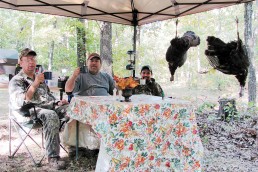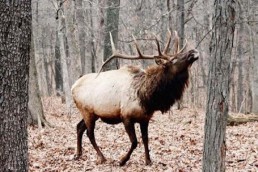For Pheasants’ Sake, Direct your Dogs away from Public Land until Mid-July
SHARE THIS POST
Training your favorite bird dog on public lands from about mid-April to mid-July causes undue stress to nesting hen pheasants, but what’s more? It’s also considered a hunting law violation in my home state of Minnesota, along with various other states in the pheasant range. Commonly referred to as the “nesting season ban,” this public lands ordinance in several states restricts the training of dogs to protect birds (and many other forms of wildlife) from being interfered with during the breeding season.
Scratching your head yet? I’m referring to Minnesota Statute 97B.005 which states: “A person may not train hunting dogs afield on public lands administered by the [DNR] commissioner from April 16 to July 14 except as specifically authorized by permit or rule.”
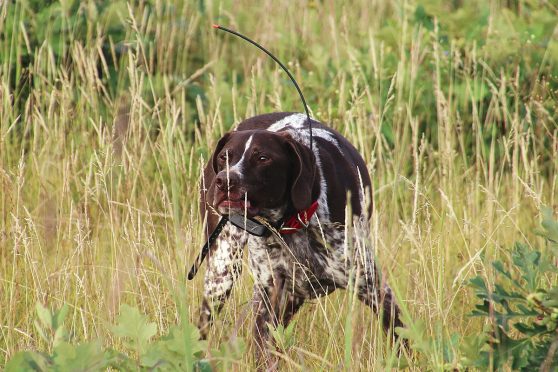
An honest conversation with pheasant hunters
In early May last year, I approached a group of dog owners (and obvious pheasant hunters) about their leisurely hike on a Wildlife Management Area (WMA) adjacent to my residence (the “Got Pointer?” stickers and flushing pheasant decals were dead giveaways). These individuals and their experienced German shorthaired pointers were canvasing 33 acres of public grasslands.
As I watched the dogs work through the cover, with hen pheasants exiting the public land and adjacent private property, I felt sick to my stomach. Why? Studies show hen pheasants are extremely likely to abandon their nesting attempt if disturbed during the laying or early incubation period. There is one, and only one, short window each year when we can grow the pheasant population. Due to this lapse in hunter judgement, the ripple effect can easily be fewer birds on public land – your land – this year, and, perhaps more importantly, fewer hens available for breeding next spring.
Perhaps most shocking wasn’t the hunters’ disregard for the law–it was, when confronted, their complete unawareness of it. Several phone calls to conservation officers revealed this is not an isolated incident at a single WMA. It seems other dog owners and, yes, some upland hunters, are unknowingly violating this law across the Midwestern pheasant range. “Some state residents view our public lands as essentially large, unfenced dog parks,” one Minnesota DNR official told me.
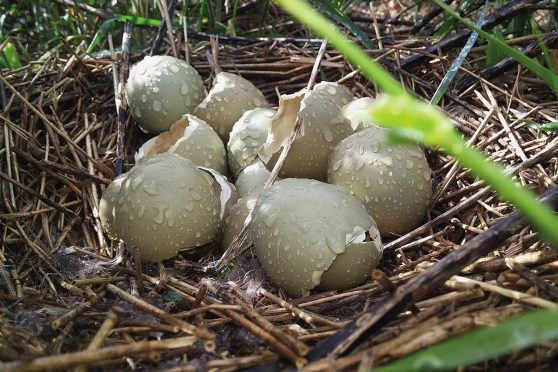
Just the facts
With an average lifespan of less than 12 months, the ring-necked pheasant relies on Mother Nature (and of course, great habitat) for a population boost every spring. If that isn’t enough to deal with, nearly every predator in a grassland ecosystem targets the ring-necked pheasant during its lifecycle for an easy meal: raccoons, opossums, skunks, snakes, and other nest-raiding critters round out the pheasant “hit list” during spring breeding season. If it’s a carnivore or omnivore, pheasants are on the menu. Do we really need to add dogs to this list of potential threats?
Are you enjoying this post?
You can be among the first to get the latest info on where to go, what to use and how to use it!
Here are a few other facts about the spring nesting season for pheasants and why they are important:
- During a warm, dry spring, pheasants may begin laying eggs as early as mid-April. They can stay on or very close to their nests during the laying period. (An upland hunter in Hennepin County called my office phone on April 28 to report a nest on his property with 12 eggs. Unintentionally, his dog forced the hen to flush from the nest and she had yet to return as of May 18.)
- Hen pheasants sit very tight on their nests during incubation, which takes 23-28 days. If a disturbance comes along, hens rely on their camouflage to go undetected and try to stay put on the nest, flushing only as a last resort. This puts them at increased risk of being injured or killed by a predator (dogs included) or a mower if they don’t get out of the way in time.
- The peak pheasant hatch in the heart of the Midwest occurs in early- to mid-June, but re-nesting attempts can stretch the nesting season out until August. Pheasant chicks need at least three weeks before they are able to fly well enough to escape danger. Keeping dogs off of public lands during the brood-rearing season helps protect them during this vulnerable time (any dog with an ounce of prey drive will easily kill pheasant chicks).
A self-imposed nesting season ban
With the dramatic change of grassland landscapes in the Midwest, including a major reduction in CRP acres over the last decade, we have reached a critical point when it comes to not having enough undisturbed nesting cover. The key word in this phrase is “undisturbed,” and many public lands in the pheasant range remain one of the last strongholds for this cover type.
As the primary users of WMAs, pheasant hunters must lead the way in following the rules and educating those within our ranks who may be in violation. Additionally, I highly recommend a self-imposed nesting season ban for your four-legged hunting crew – you can even stretch it out until mid-August to allow those late-nesting hens a chance to raise a brood. Trust me, you and your pup will be rewarded for your efforts this fall. More successful early nesting attempts means more birds in the population this summer, and more enthusiastic hunting parties when pheasant seasons open.
Contact your local conservation officer for more detailed information about dog training on lands administered by your state DNR agency from early spring through midsummer.
MWO
SHARE THIS POST
Did you enjoy this post?
You can be among the first to get the latest info on where to go, what to use and how to use it!
Jared Wiklund
Jared Wiklund is Pheasants Forever’s public relations manager, secretary for the Washington County Chapter of Pheasants Forever in Minnesota, and an avid upland hunter. Contact your local conservation officer for more detailed information about dog training on lands administered by your state DNR agency from early spring through midsummer.
